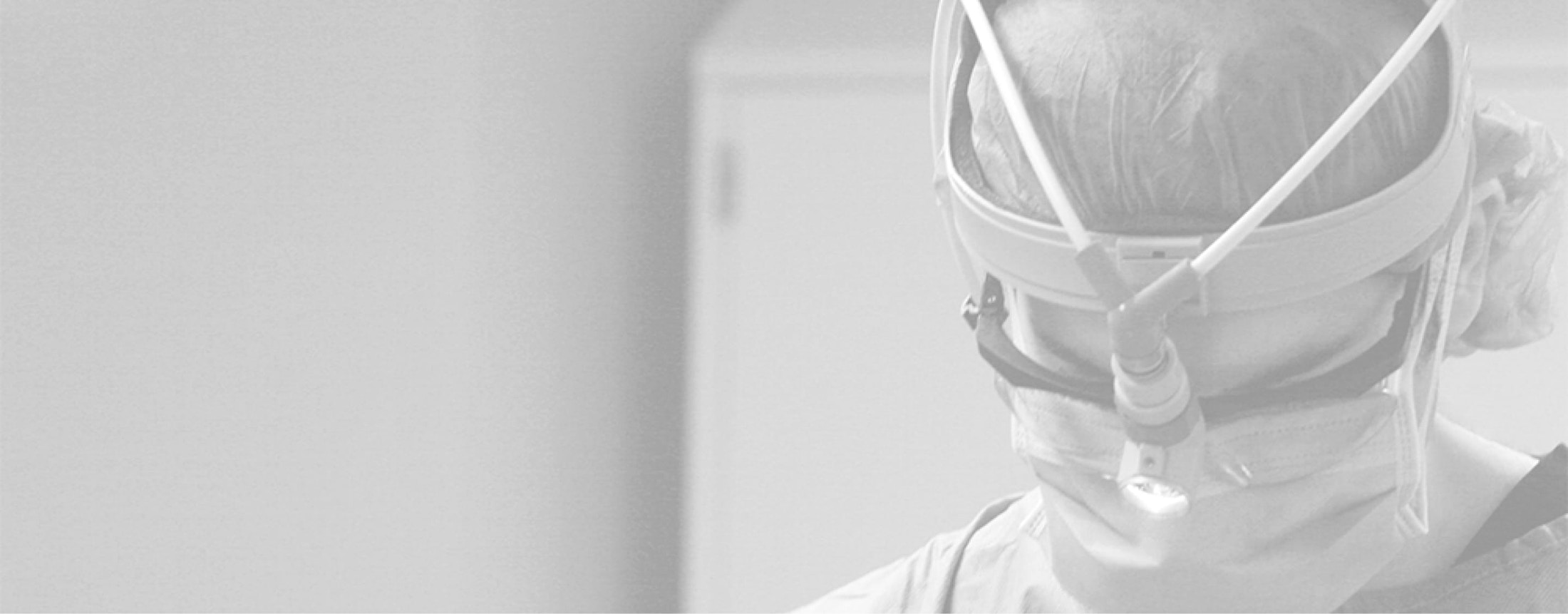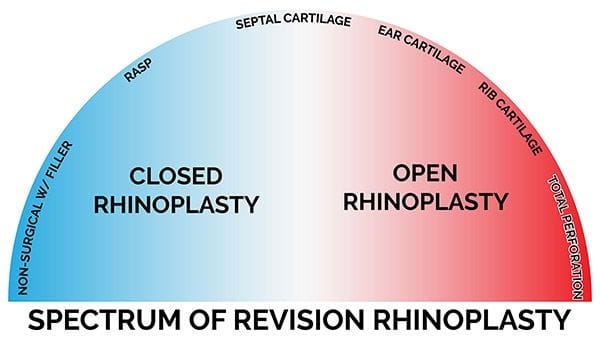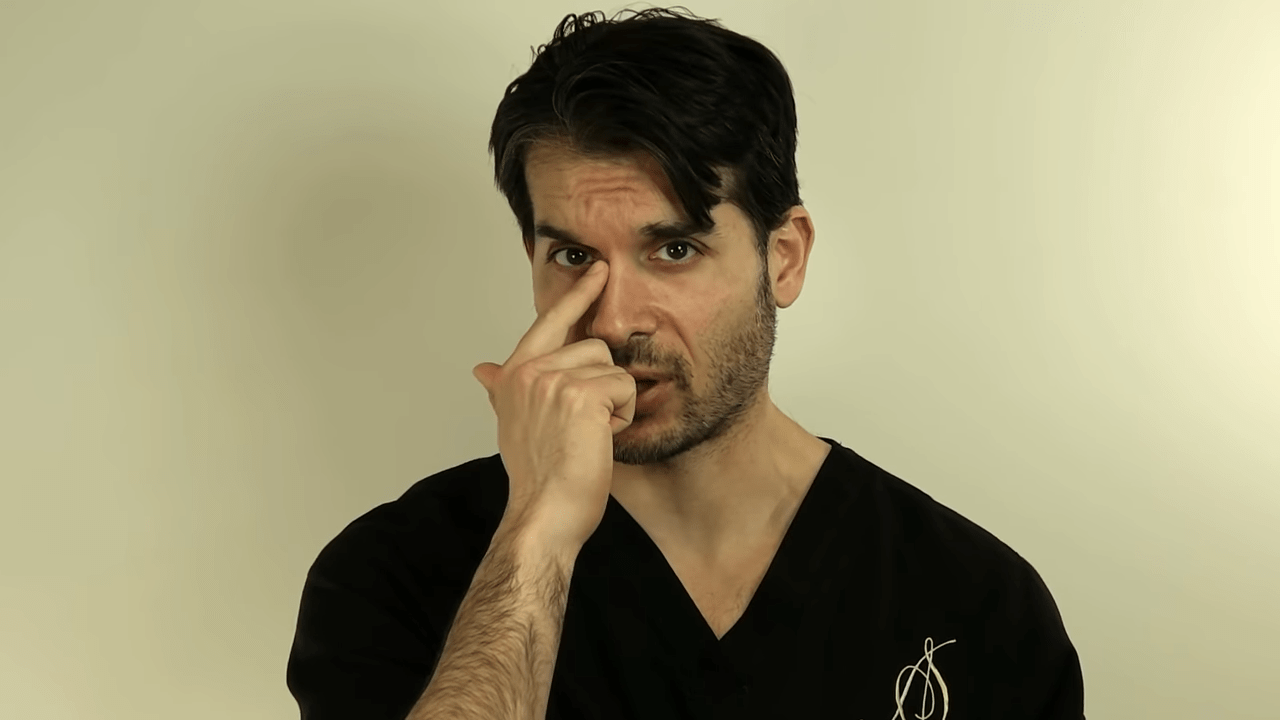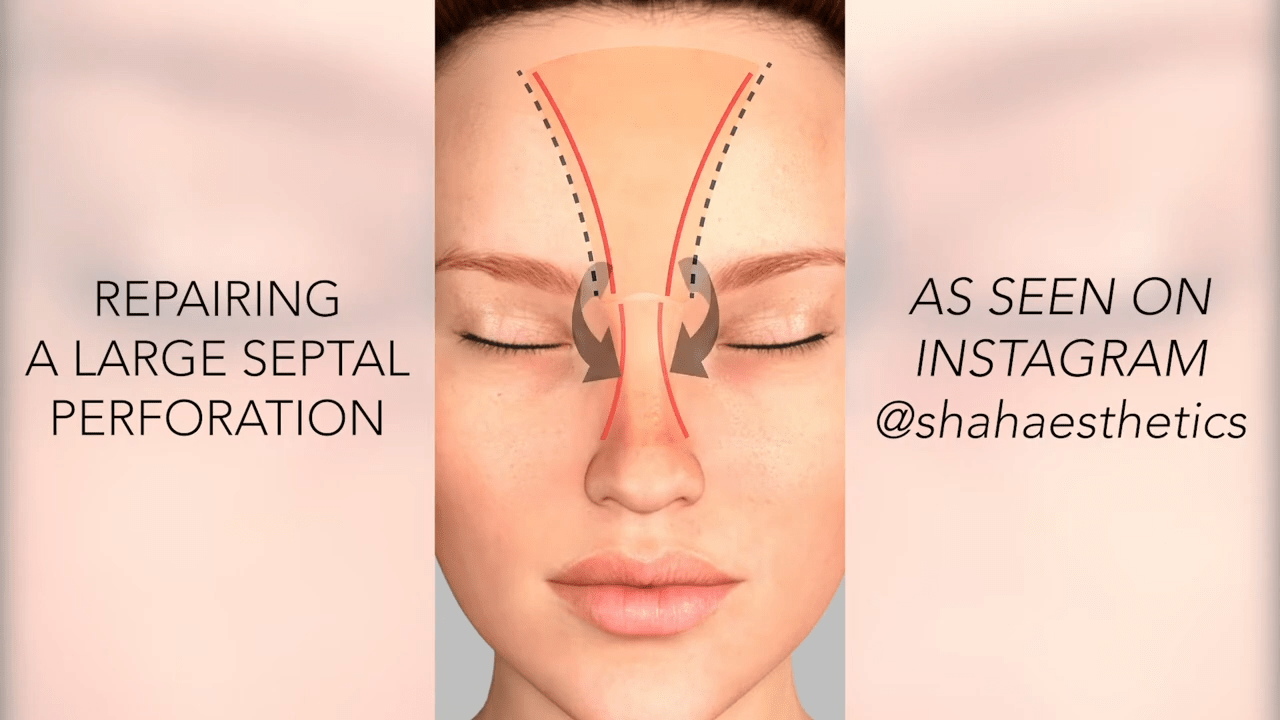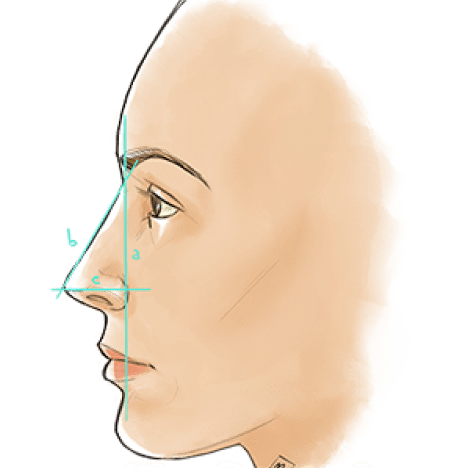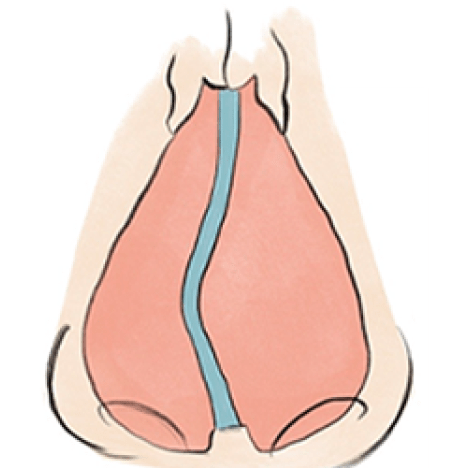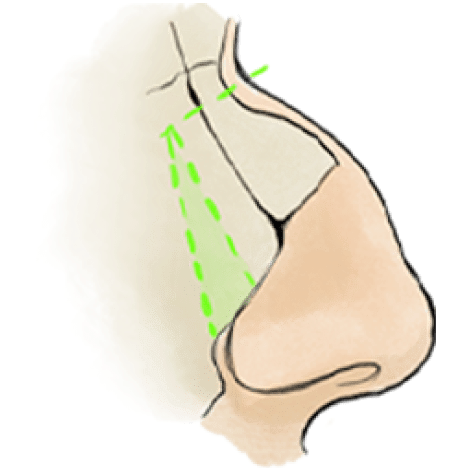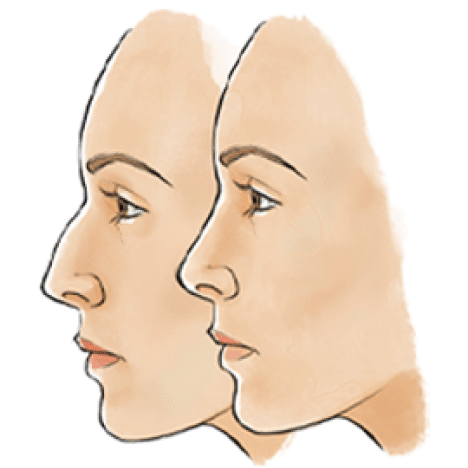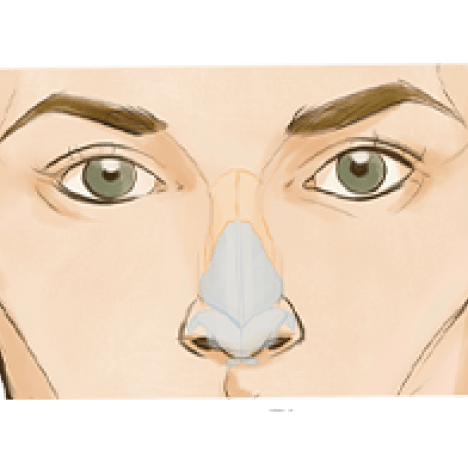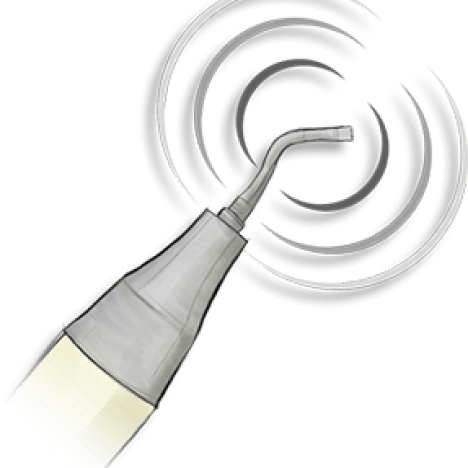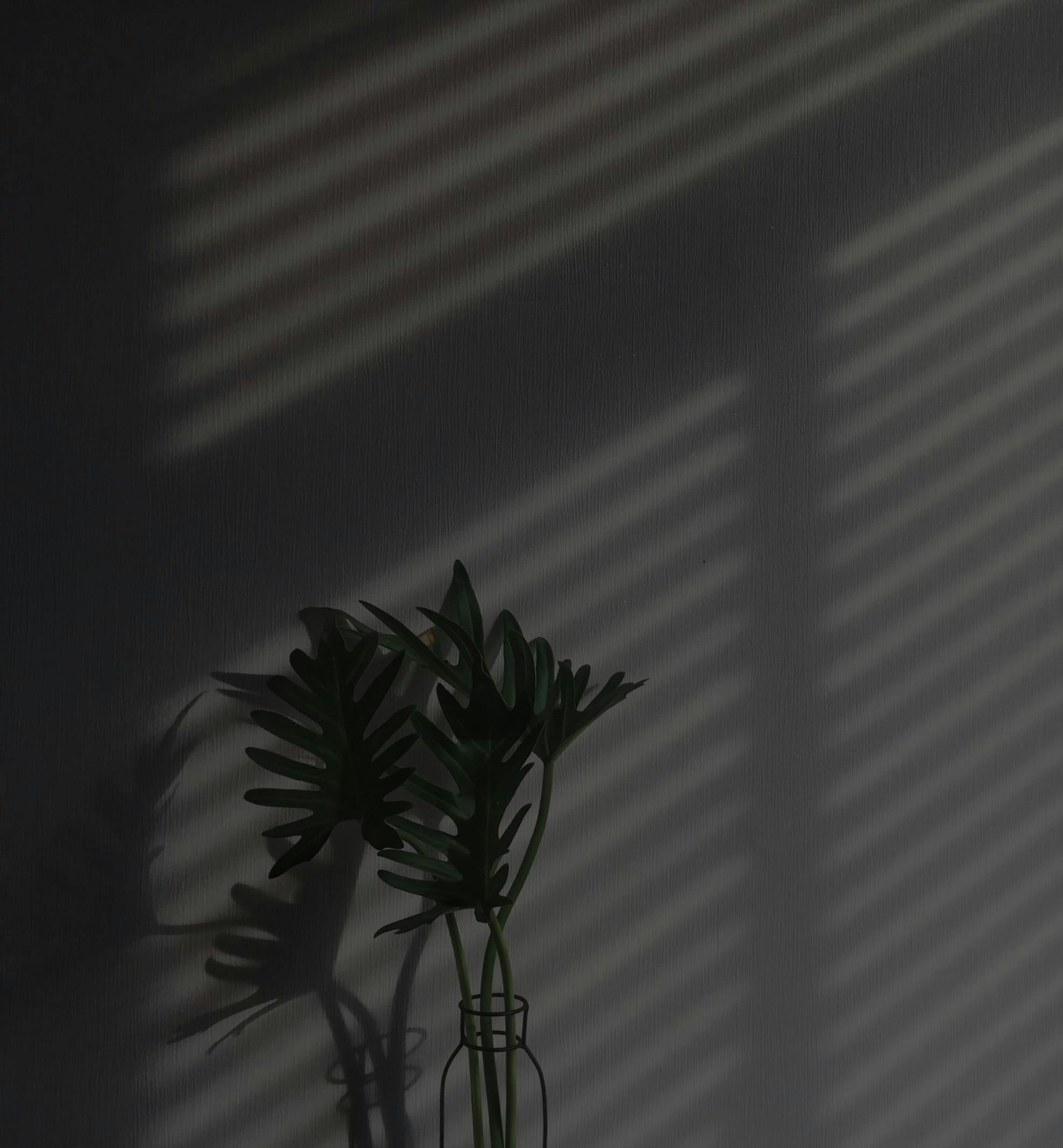What is a secondary rhinoplasty?
Revision rhinoplasty, also known as redo rhinoplasty, is when additional surgery is required after a previous rhinoplasty has been performed. There are different reasons to get revision rhinoplasty, such as improved breathing, a change similar to their previous nose, or improvement on their existing rhinoplasty result.
Many advances have been made in revision rhinoplasty over the past five years. Many persons with nasal deformities thought to be “inoperable” in years past by surgeons from other decades may be able to be addressed by newer techniques and a better understanding of nasal dynamics.
Revision rhinoplasty is probably the most difficult procedure in all of plastic surgery. While rhinoplasty is difficult procedure by itself, revision rhinoplasty makes this procedure even more challenging. Oftentimes, patients need cartilage grafting to help recreate natural structures and create nasal shapes.
How will I know if Dr. Shah knows what I want?
One of the key steps of performing revision rhinoplasty is a clear idea of what the patient wants and communication. Dr. Shah uses computer imaging to facilitate a clearer understanding between himself and the patient.
Computer imaging serves as a guide to create various noses and determine an aesthetic level of acceptance. For example, a patient may want her nose deprojected, and Dr. Shah will present multiple options to determine what the patient finds satisfactory or not. If the patient and Dr. Shah do not come to an understanding during his consultation, he will meet with them as many times as necessary to better understand and clarify each other’s aesthetic goals. If Dr. Shah does not feel like he “understands” the patient’s aesthetic he will not operate on the patient.
Does Dr. Shah use open or closed techniques for revision rhinoplasty?
Dr. Shah uses both endonasal and external approaches in revision rhinoplasty depending on what your specific needs are.
Endonasal rhinoplasty is where all incisions are made within the nostril, while external rhinoplasty is where a small incision is made across the columella (skin area between the nostrils). There are pros and cons specific to each procedure. Dr. Shah feels strongly that every rhinoplasty surgeon should be able to use both techniques so that patients can have the best possible procedure for them.
I am coming from far away and am not sure if I am a candidate.
Dr. Shah sees patients from all over the country and the world, including California, England, the Netherlands, India, the United Arab Emirates, Japan, China, and Canada. He and his staff help screen patients from afar to help make sure your visit to Chicago, IL is productive.
Where does Dr. Shah operate?
Dr. Shah operates only at accredited centers with board-certified anesthesiologists. He prefers to operate at Gold Coast SurgiCenter for their level of care and excellent nursing for cosmetic surgery patients.
Does Dr. Shah understand ethnic patients’ concerns?
Dr. Shah is from a diverse racial background, with a dark-haired father from Banglore, India, and a blond-haired mother from Italy. His wife is also of mixed background as well. He has worked extensively with patients of Asian, African-American, and Latin descent. Not only are there clear physical differences between noses from different backgrounds, but each patient has a unique set of cultural norms and ideas.
“Beauty does not know race or skin color.” – Anil R. Shah.
Dr. Shah will work with the patient to find an acceptable shape and contour of the nose. Beauty is universal.
Does Dr. Shah use K-wire?
Dr. Shah does not, except with rare exceptions. There are two instances when surgeons use K wire in rhinoplasty. First of all, some surgeons use K wire to help decrease the incidence of warping with the use of coastal cartilage. Dr. Shah carves the costal cartilage in a way in which he does not need a K-wire.
The second instance in which K wire is used is when the junction between the bony part and the cartilage part of the nose is disrupted. This is also known as total nasal collapse. Some surgeons will drill K wire through the nasal bones through the cartilage and then through the other side (Reported on a series of six patients in Plastic and Reconstructive Surgery). Dr. Shah uses a different technique where he drills a hole through the nasal bone but supports it with a series of permanent sutures and grafts. He has performed this on a small series of patients (five patients) with success.
Will Dr. Shah give me the most fashionable nose available?
“Fashion passes, style remains.” Coco Chanel.
Dr. Shah does not believe in trends for the nose. His desire is to create a natural nose in appearance and shape specifically created for that patient. He does not have a preference for his nose (strong, projected, etc), but just creates a nose that matches a person’s face in a natural appearance.
Will I have bruising after surgery?
Dr. Shah utilizes a series of preoperative and postoperative alternative medicines to help reduce bruising and swelling. He also performs special maneuvers to minimize trauma to the nasal mucosa and periosteum of the nasal bones (which is responsible for a key component to bruising and swelling postoperatively.) Some patients will still bruise despite these measures, however, Dr. Shah will utilize targeted therapies to expedite the healing postoperatively.
Does Dr. Shah have experience in revision rhinoplasty?
Dr. Shah has extensive background, training, and experience in revision rhinoplasty. 50% of his rhinoplasty practice is revision rhinoplasty work from other surgeons. He is a professor and teaches at a major university to other surgeons on how to perform rhinoplasty better.
He has performed revision rhinoplasty on a wide variety of noses including noses without septal or auricular cartilages, noses without lower lateral cartilages, upper lateral cartilages, severe deviations, noses that have been operated on five or more times, noses with extruded implants, retracted columellas, hanging columellas, pinched nasal tip, wide nasal tip, etc.
Is cartilage grafting necessary for my revision rhinoplasty?
Many patients wonder whether cartilage grafting is necessary for revision rhinoplasty. It depends on the characteristics of the nose and how much cartilage or structure was preserved in the nose after the previous rhinoplasty. Dr. Shah utilizes only your existing cartilage in rhinoplasty. This cartilage can come from your existing nasal septum, ears (concha cymba and cavum), and rib (costal cartilage).
Dr. Shah is one of the few surgeons who utilizes costal cartilage. He has published two landmark articles on costal cartilage and is frequently referred to complex cases by other prominent nationally known rhinoplasty surgeons. He harvests costal cartilage in a unique manner in which he does not cut any muscles surrounding the rib. He also utilizes a special technique in closing the donor site, making recovery from this procedure rapid and recovery expedient.
Auricular cartilage grafting is done with a postauricular incision, in order to hide the incision. He removes only the portion of the ear that will not affect the ear’s shape. In fact, your ear will look the same except feel slightly softer in the portion where auricular cartilage has been removed.







